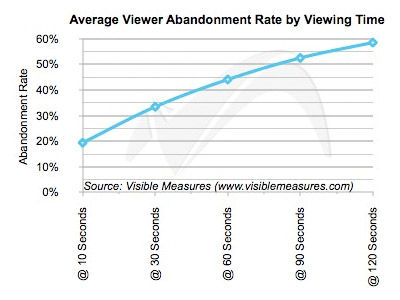Love Isn’t the Measure of Successful Video

A friend of mine, a guy who has been a venture capitalist for a long time, listened patiently to an entrepreneur gush about the impressive number of views drawn by the video his company recently posted on YouTube.
Finally, my VC pal could take no more.
“Counting views,” he said, “is as meaningless as playing pinball. Views mean nothing unless they bring revenue in the door.”
Effective marketing creates an environment in which sales occur. And the most important piece of any sale is the close — the call to action.
We all know this.
And we all forget it far too often, whenever a super-creative member of our team develops a stunning video that moves audiences to laughter or to tears, but doesn’t call on the audience to actually do anything.
So how do we ensure that video is active — generating a response from the audience — rather than merely a passive viewing experience?
Make a Commitment to Action
For starters, obvious as it may seem, brands and their marketers need to commit themselves to actionable video content. Each member of the team needs to understand that video that fails to deliver a pre-determined response is a failure, no matter how spectacular or creative the content may be.
In the same breath, creative teams and the managers of the brand need to agree on the response they want. Immediate click-throughs to an order form? Subscriptions to ongoing campaigns? Links to the brand’s site?
It’s an old truism: If you don’t know where you’re going, any road will get you there. Old truisms apply as well to new marketing tools.
Using the 3 C’s
Once those basic understandings are in place, it’s helpful to follow what YouTube’s Saina Shelton calls the “3 C’s” of actionable online videos: Conversations, connections and conversions. She knows what she’s talking about. She’s the global lead for global brands on YouTube.
In a really terrific tutorial posted very recently, Shelton suggests that brands can spark conversation through questions that encourage viewers to respond. A destination marketer, for instance, might ask the reasons that visitors to Lake Tahoe prefer winter sports or summer activities.
The challenge for creative teams is this: To be effective, the question needs to be asked very quickly. An Ad Age study found that brands can expect to lose 20 percent of their viewers within 10 seconds from the time they start watching. Within 30 seconds, a full third of the audience has abandoned a typical video. I would guess abandonment rates are even faster today than they were when this study was published in 2010 because viewers’ attention spans appear to be growing shorter and they have an exploding number of choices.

The second of Shelton’s 3 C’s, connections, also requires a well-defined call to action. She observes that valuable or entertaining video content opens the possibility of longstanding subscription relationships — but only for brands that specifically ask for the relationship.
Commitment to a strong call-to-action is critically important, too, to realize the third of Shelton’s 3 C’s. Conversion of casual viewers into paying customers — or at least the first steps in that direction — can be accomplished by video marketing.
Shelton suggests using shortened URLs in the video description, directing consumers to the brand’s Web site or a product-order page. Other brands use YouTube’s interactive cards to direct viewers to take action.
Make the Call Effective
Intuitively, most of us expect a call to action to come at the end of the pitch. But the rapid abandonment rate of so many videos demands that a call to action — or at least a strong hook that leads to a call to action — somehow should be incorporated into the first 15 seconds of a video piece.
And the wording as well as the design of the call needs to crystal-clear.
Brittany Leaning, a savvy content marketing strategist, this spring pulled together 31 examples of effective calls to action for HubSpot. The common element among all of them is design that doesn’t allow the call to action to get lost and a clear request for the viewer to take action.
Little of this is new. The marketing profession’s growth through the decades has reflected its ability to move consumers to action.
But every new marketing tool requires a renewed commitment to the creation of actionable responses. Video is no different. It doesn’t matter how much viewers love our content. We need to move them to take action to buy something.



